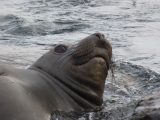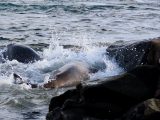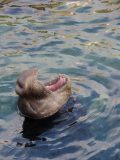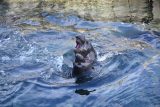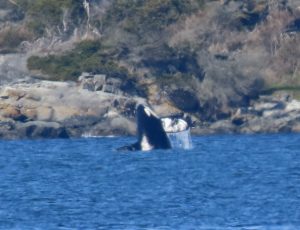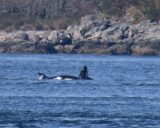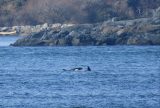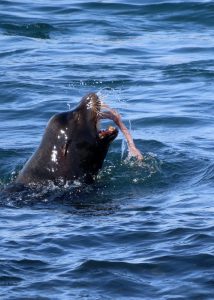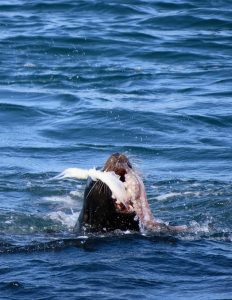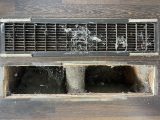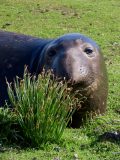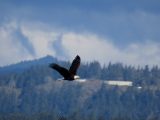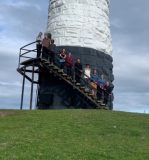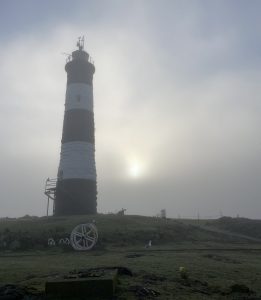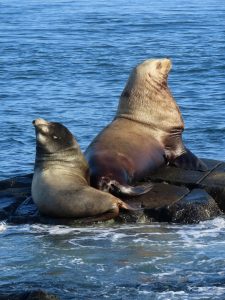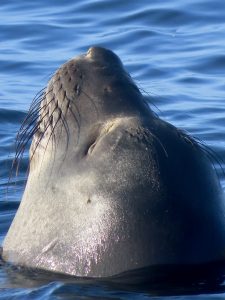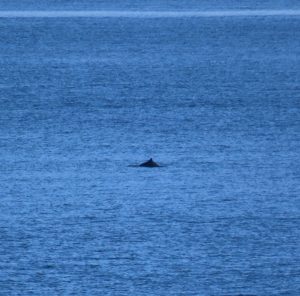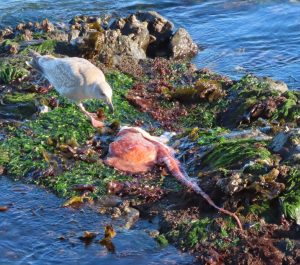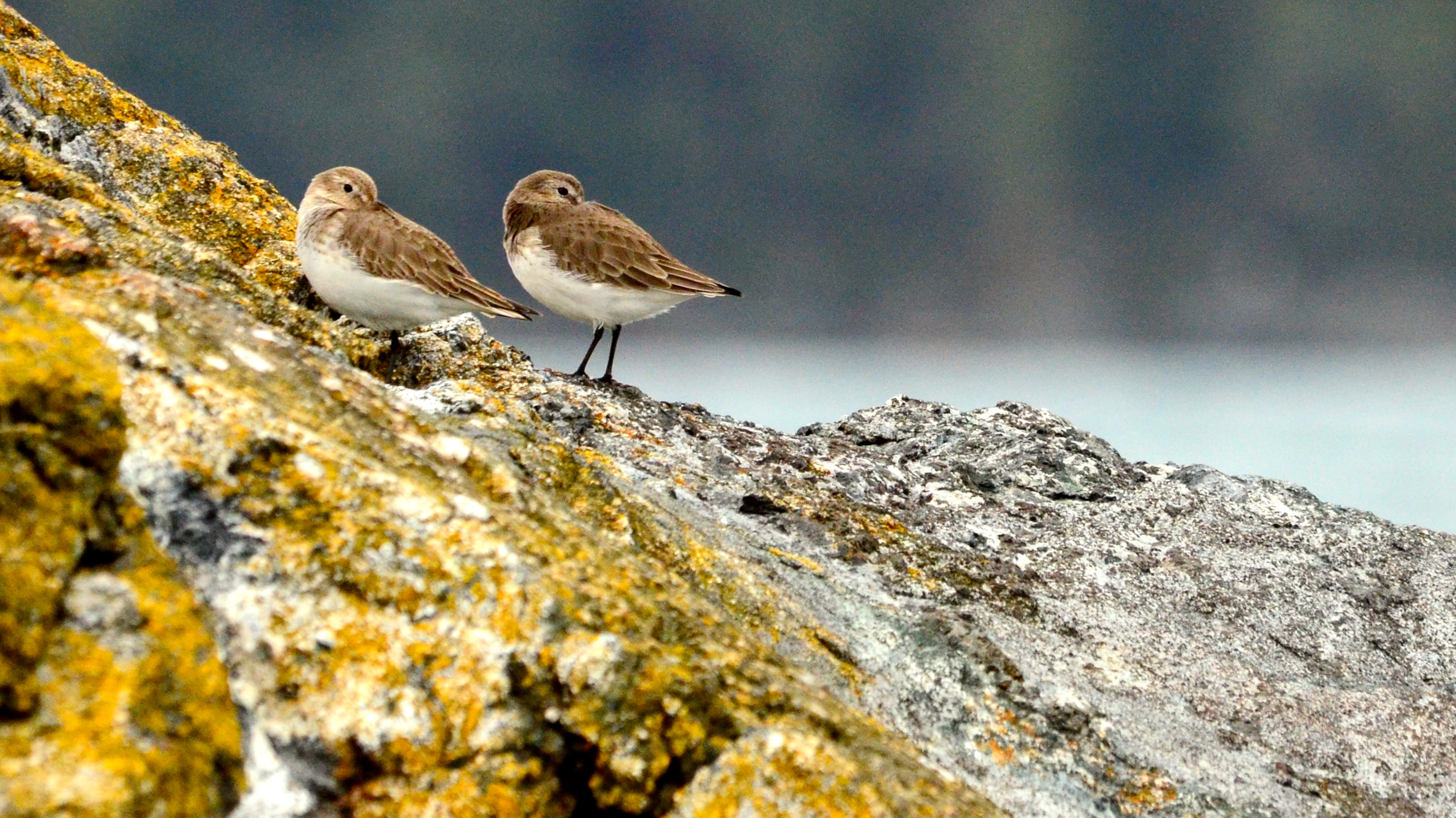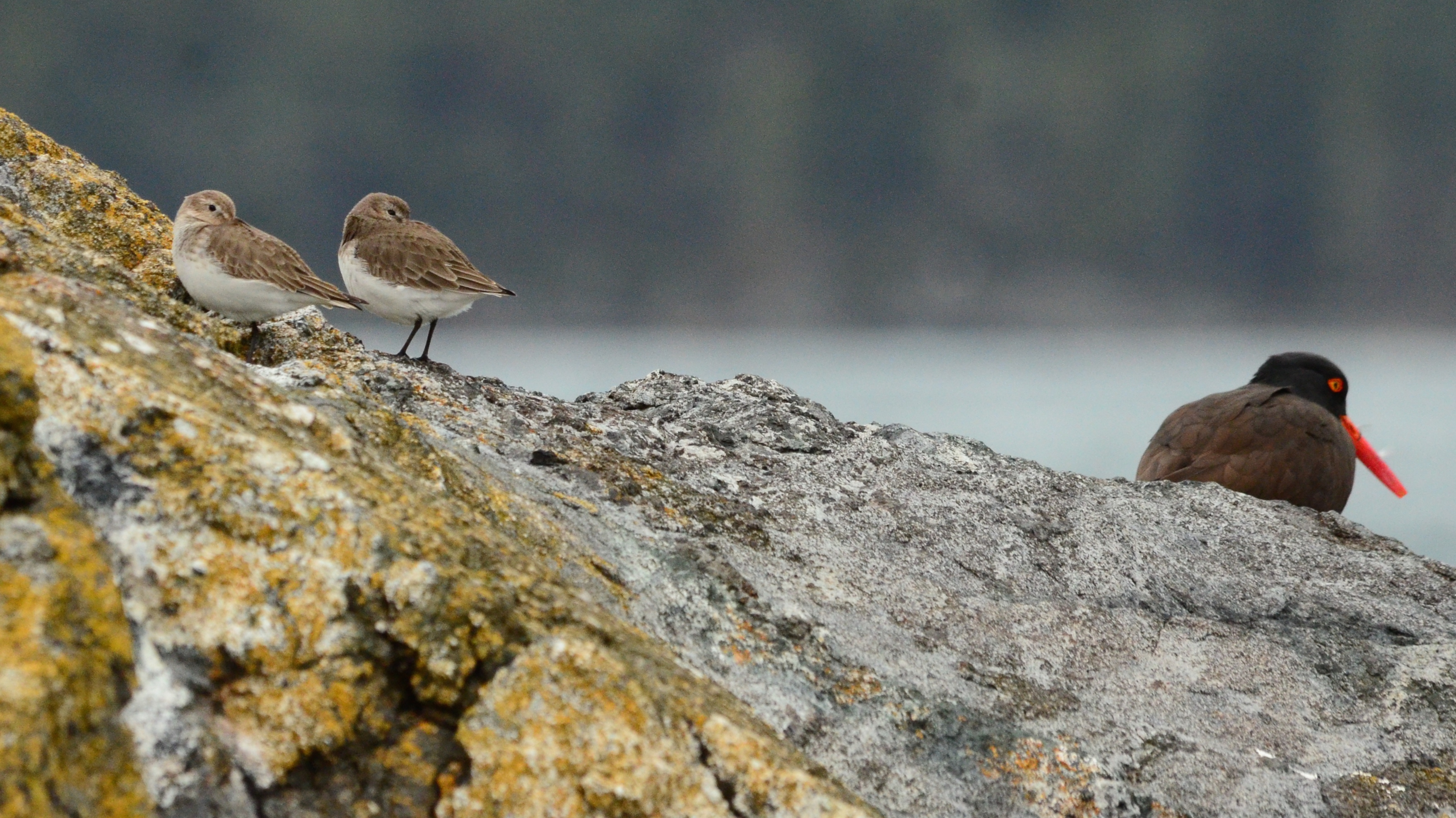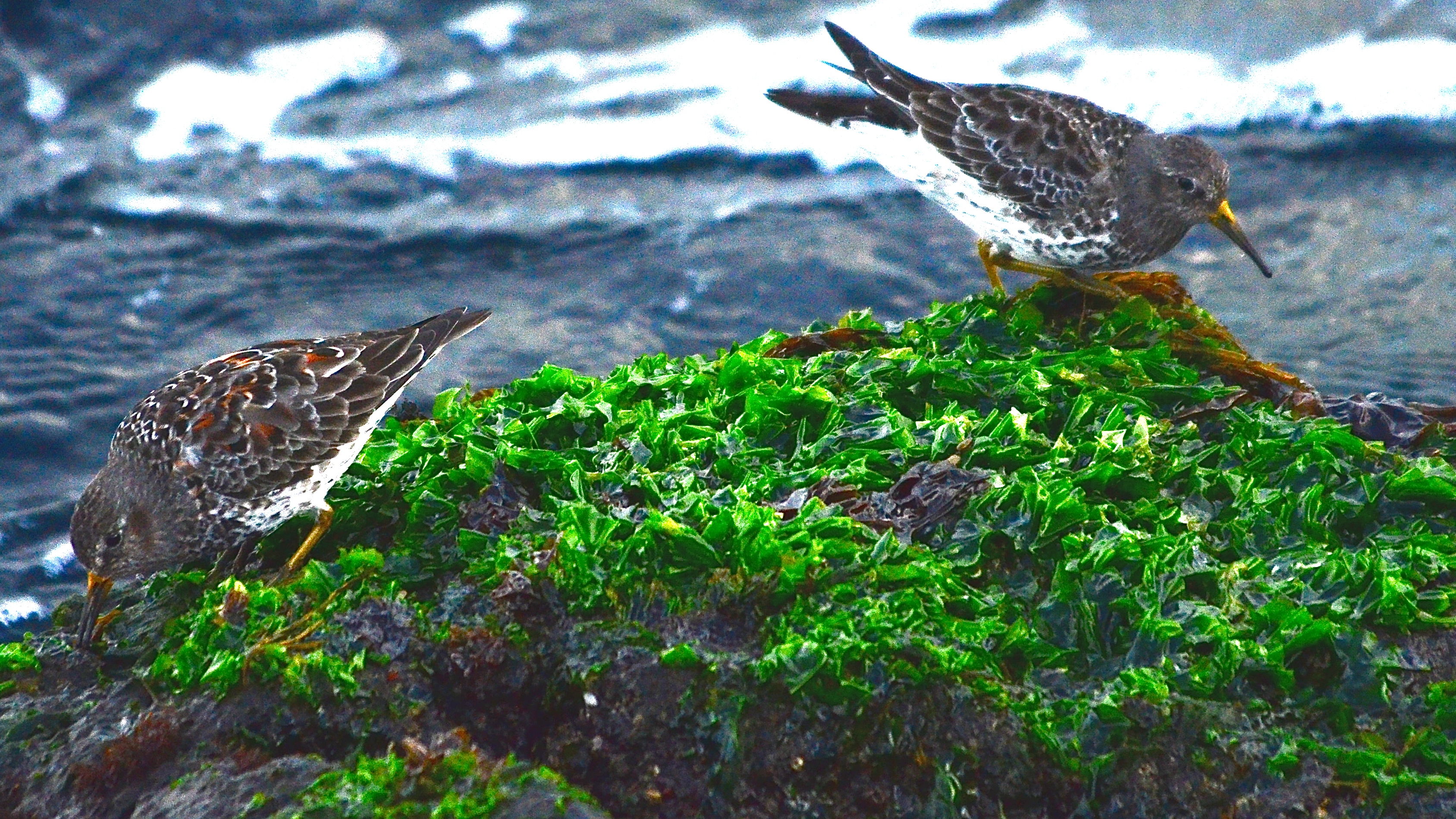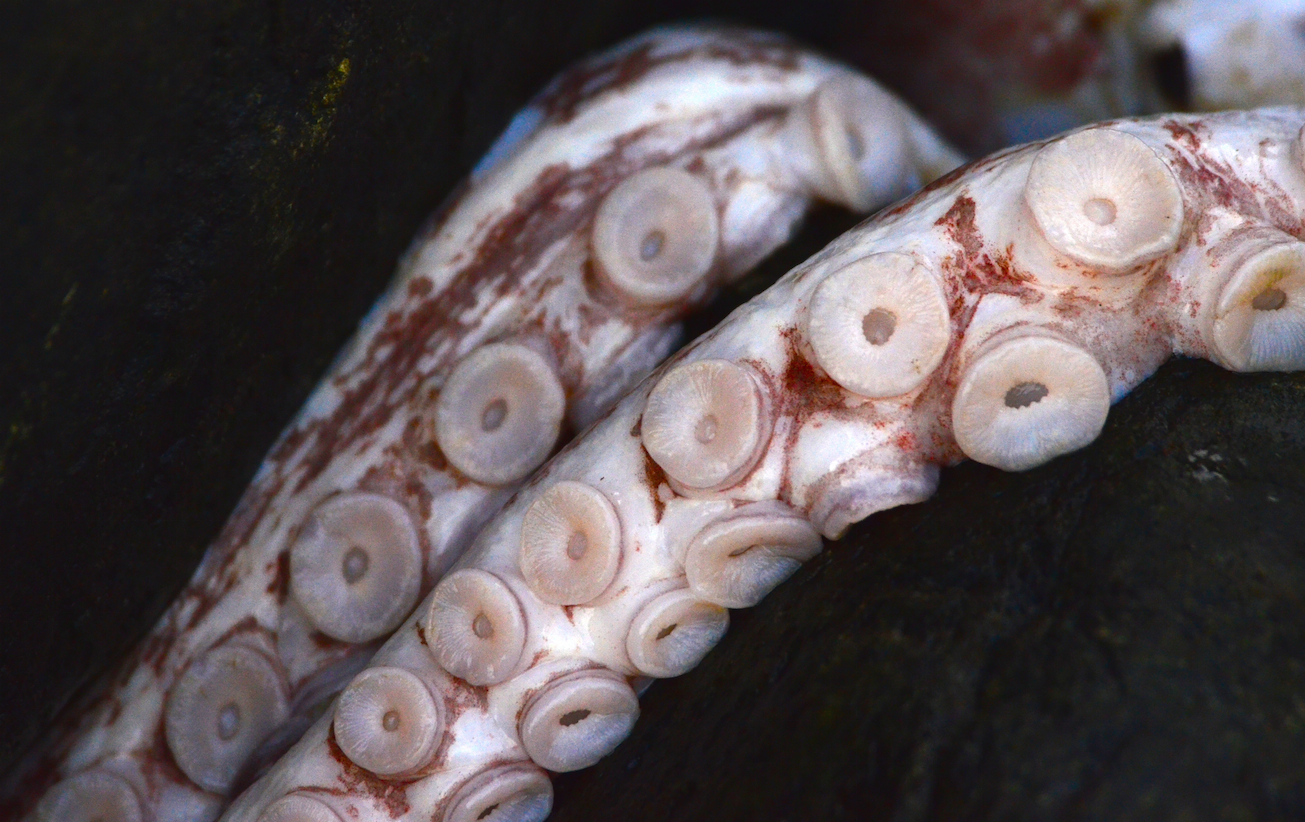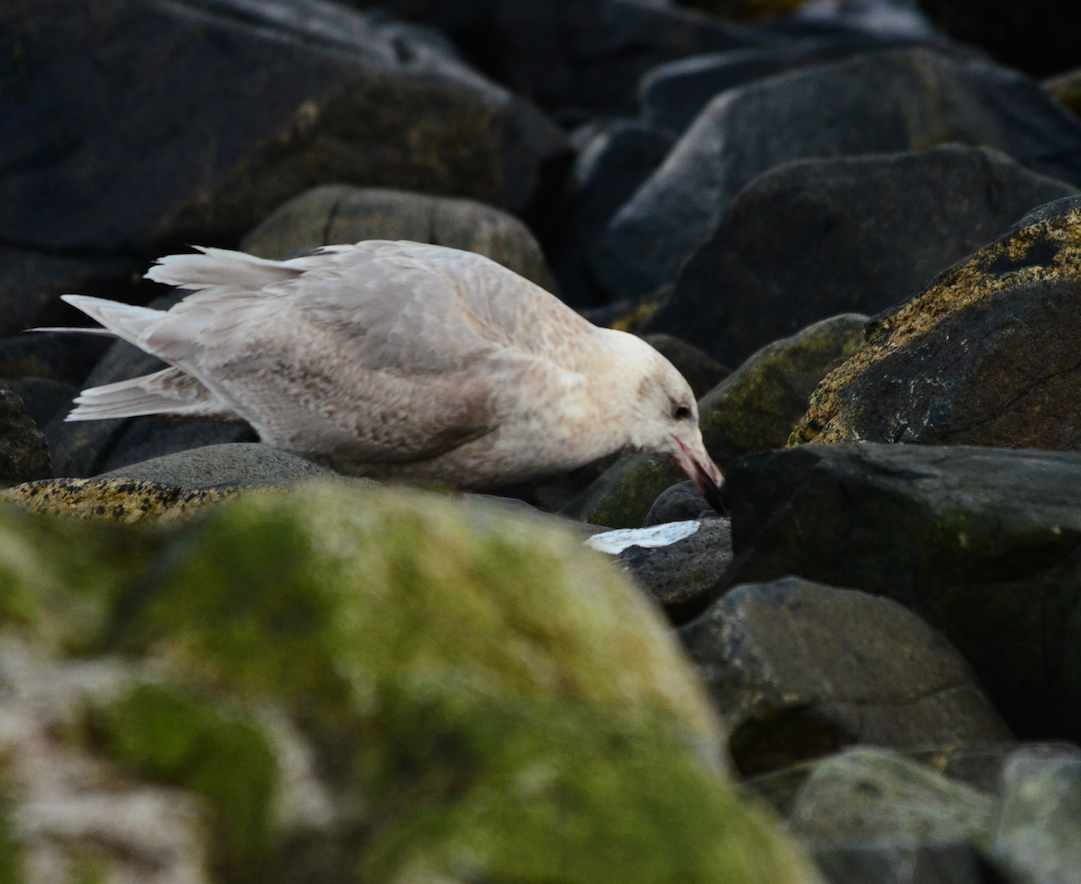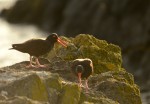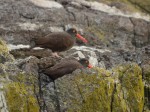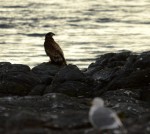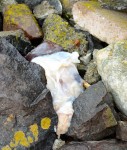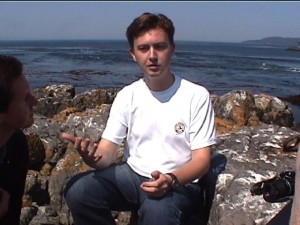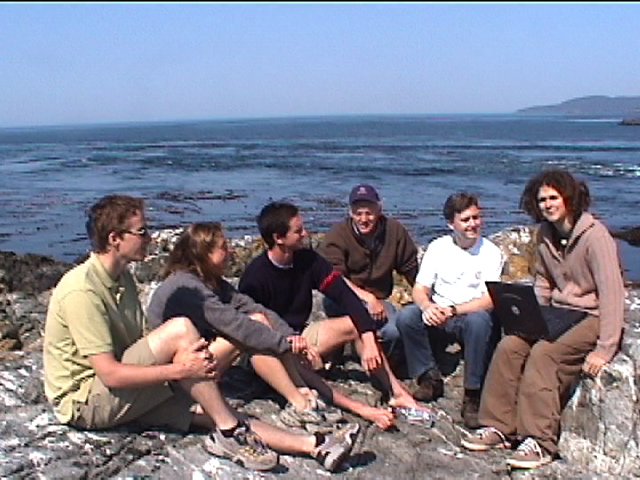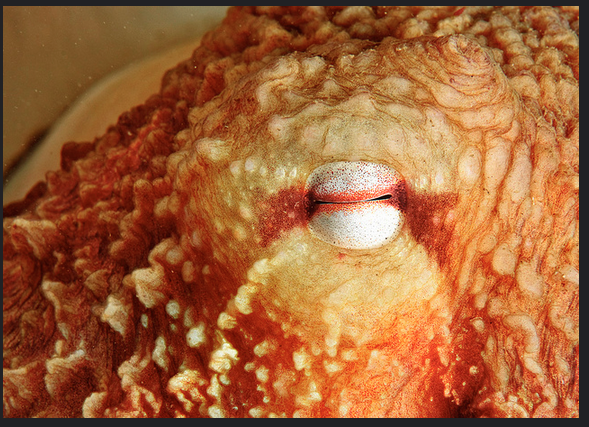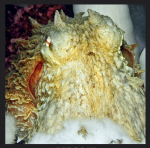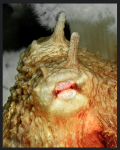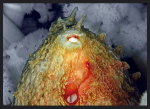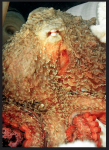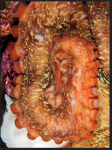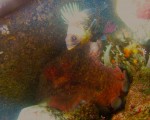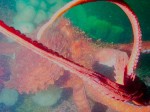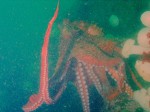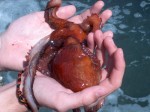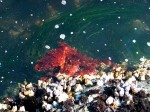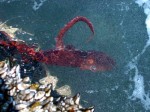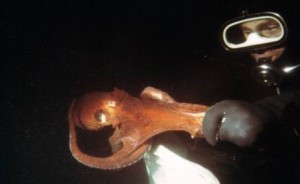Every day when I think I’ve seen it all here, somehow something new happens and its what I love most about this place. Aside from the seals that is…and the sea lions…and the sea otters.
This morning as I did my morning walk around I spotted one of the female elephant seals in the water next to the jetty. Shortly after, the male elephant seal joined her. There was a lot of chaos — heads thrashing, biting, splashing, vocalizing. It finished as fast as it started. The female was nowhere to be found and the male took back his spot on the boat launch.
- Suspicious
- Morning chaos
- More chaos! Amazing photo taken by one of the visiting students
This afternoon I spotted a lone male killer whale who may be one of the largest I’ve personally seen. I’m working on my ID skills still but I’d love to figure out who he is. He was quite far away so my photos aren’t too clear. One of these days I’ll get whales in the reserve! (I hope.)
A few hours later 4 more killer whales passed by about the same distance away. These ones appeared to have a baby with them and although they were travelling we did get to see a couple little spy hops!
- I Spy!
- 2 out of 4 whales travelling together
As we were watching the whales, one of the California sea lions near the jetty popped up right in front of us with a large octopus in his mouth. He thrashed it around and put on a pretty great show!
As for the less exciting non animal notes — I’m still working on cleaning and getting the main house ready for the next Ecoguardian to arrive, including cleaning out the vents in the house now that the furnace is up and running. Talk about dusty! (see photos below).
I have also been trying to use the desalinator as much as possible to get the water level up. It dipped down low after we did some pressure pressure washing earlier this month and coupled with the 9 extra people here this week I want to make sure the Ecoguardian coming after me isn’t left high and dry!
- Before
- After!
It has been so great getting to know the students from Pearson. Everyone has such different interests and knowledge, I think I have learned more from them than they have me!
- Male elephant seal
- Bald eagle mid flight
- Group photo!
Additional information from the day:
DND Activity:
- 2 blasts around 11:30
- 2 blasts around 13:00
- 2 blasts at 15:45
- Observers were on the water all day. No blasts happened while orca in the area and no noted disturbance to animals within the reserve.
Noted Vessel Traffic:
- 5 ecotourism vessels
- 5 RCMP vessels
Weather Events:
- Thursday, March 21:
- Sky: Sunny morning, some cloud cover in the afternoon
- Wind: High of ENE 13 knots, Low of 0 knots
- Sea: Calm
- Temperature: Low 7oC, High 10oC
** All wildlife photos taken at the furthest distance possible, and may be cropped to improve detail! **
Weather – Current:
http://www.victoriaweather.ca/current.php?id=72
Weather – Past:

